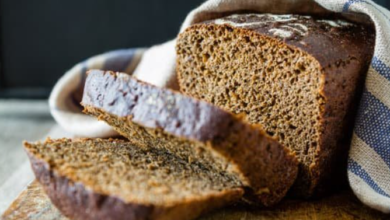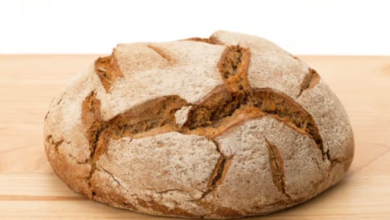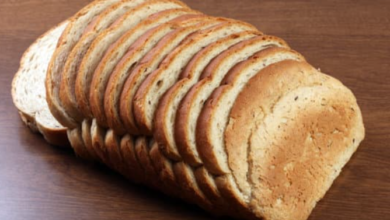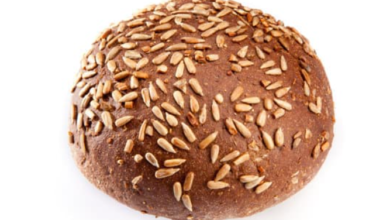Rye Bread Vs English Muffin: The In-Depth Comparison
What To Know
- Rye bread is a good source of B vitamins, including thiamin, riboflavin, and niacin, which are essential for energy production and brain function.
- English muffins have a light and fluffy texture due to the use of white flour and the addition of baking powder or baking soda.
- Both rye bread and English muffins can be used in a variety of dishes, but they excel in different ways.
In the realm of breakfast staples, rye bread and English muffins have long been vying for supremacy. Each boasts a unique flavor profile, texture, and nutritional value, making the choice between them a matter of personal preference. This comprehensive comparison will delve into the key differences between these two beloved breads, helping you make an informed decision the next time you’re at the breakfast table.
Nutritional Value
Both rye bread and English muffins offer a range of essential nutrients, but their nutritional profiles differ in some significant ways.
Rye Bread
- Higher in fiber: Rye bread contains more fiber than English muffins, which can aid in digestion and promote satiety.
- Rich in B vitamins: Rye bread is a good source of B vitamins, including thiamin, riboflavin, and niacin, which are essential for energy production and brain function.
- Lower in calories: Rye bread tends to be lower in calories than English muffins, making it a slightly healthier choice for weight management.
English Muffins
- Higher in protein: English muffins contain more protein than rye bread, which can help support muscle growth and repair.
- Good source of iron: English muffins are a good source of iron, which is important for red blood cell production and oxygen transport.
- Fortified with folic acid: Many English muffins are fortified with folic acid, a B vitamin that is crucial for fetal development and overall health.
Texture
The texture of rye bread and English muffins is noticeably different.
Rye Bread
- Dense and chewy: Rye bread has a dense and chewy texture due to the presence of rye flour.
- Slightly sour flavor: Rye flour also imparts a slightly sour flavor to rye bread, which some people enjoy and others find off-putting.
- Crumbly: Rye bread can be more crumbly than English muffins, especially when toasted.
English Muffins
- Light and fluffy: English muffins have a light and fluffy texture due to the use of white flour and the addition of baking powder or baking soda.
- Nooks and crannies: English muffins are known for their signature nooks and crannies, which allow for ample spread absorption.
- Soft and moist: English muffins remain soft and moist even when toasted, making them a popular choice for breakfast sandwiches.
Flavor
The flavor of rye bread and English muffins varies depending on the specific ingredients used.
Rye Bread
- Earthy and nutty: Rye flour gives rye bread a distinctive earthy and nutty flavor that some find appealing.
- Can be bitter: Rye bread can sometimes have a slightly bitter taste, especially if it is made with a high percentage of rye flour.
- Versatile: Rye bread can be paired with a wide range of toppings, from sweet to savory.
English Muffins
- Mild and neutral: English muffins have a mild and neutral flavor, making them a versatile choice for both sweet and savory toppings.
- Buttery: English muffins often have a buttery flavor, thanks to the addition of butter or milk to the dough.
- Pairs well with runny eggs: The nooks and crannies of English muffins make them ideal for soaking up runny eggs, bacon, and other breakfast favorites.
Versatility
Both rye bread and English muffins can be used in a variety of dishes, but they excel in different ways.
Rye Bread
- Sandwiches: Rye bread is a classic choice for sandwiches, especially those with deli meats, cheeses, and vegetables.
- Toast: Rye toast is a hearty and flavorful base for avocado, smoked salmon, or cream cheese.
- Croutons: Rye bread can be cut into cubes and toasted to make croutons for salads and soups.
English Muffins
- Breakfast sandwiches: English muffins are the perfect bread for breakfast sandwiches, with their ability to hold up to heavy toppings without becoming soggy.
- Topped with butter and jam: English muffins are a simple yet satisfying breakfast treat when toasted and topped with butter and jam.
- Pizza crust: English muffins can be used as a quick and easy pizza crust, providing a chewy and flavorful base for your favorite toppings.
Which is Better for You?
The choice between rye bread and English muffins ultimately depends on your individual preferences and dietary needs.
- If you prefer a hearty, fiber-rich bread with a slightly sour flavor, rye bread is a good choice.
- If you prefer a light, fluffy bread with a mild flavor and ample spread absorption, English muffins are a better option.
- If you are looking for a bread that is lower in calories and higher in fiber, rye bread is the better choice.
- If you are looking for a bread that is higher in protein and iron, English muffins are the better choice.
The Final Verdict: It’s a Matter of Preference
The debate between rye bread and English muffins is a matter of personal preference. Both breads offer unique flavor profiles, textures, and nutritional benefits.
- If you enjoy a hearty, nutty bread with a slightly sour flavor, rye bread is a great choice.
- If you prefer a light, fluffy bread with a mild flavor and ample spread absorption, English muffins are a better option.
- Ultimately, the best bread for you is the one that you enjoy the most.
Frequently Asked Questions
1. Which bread is healthier, rye bread or English muffins?
Both rye bread and English muffins can be part of a healthy diet, but rye bread tends to be slightly healthier due to its higher fiber content and lower calorie count.
2. Can I substitute rye bread for English muffins in breakfast sandwiches?
Yes, you can substitute rye bread for English muffins in breakfast sandwiches. However, rye bread may not hold up to heavy toppings as well as English muffins.
3. Which bread is better for toasting, rye bread or English muffins?
Both rye bread and English muffins can be toasted, but English muffins tend to toast more evenly and consistently due to their lighter texture.
4. Can I use rye bread to make croutons?
Yes, rye bread can be used to make croutons. Simply cut the bread into cubes and toast them in the oven until golden brown.
5. Can I use English muffins to make pizza crust?
Yes, English muffins can be used to make pizza crust. Simply split the English muffin in half, toast it, and top it with your favorite pizza toppings.



